All the new EV brands coming to Australia by 2025

By the end of 2025, there could be more than 40 brands of electric vehicles (EVs) in Australia as a swathe of carmakers expand globally.
That’s almost as many as in the UK – which is significant because it is also a right-hand drive market, in a world where many EVs are initially made in left-hand drive.
The new vanguard of electric vehicle makers is, in some ways, just another side of the same coin that saw Japanese carmakers like Toyota and Nissan enter the market in the late 1950s and 1960s, followed by South Korean carmakers like Hyundai and Kia in the 1980s and 1990s.
Ranging from EV startups to megabrands, many hail from China, the world’s largest EV market. They are eyeing a country with no protectionist outlook - unlike the USA, which has just implemented a 100 per cent tariff of Chinese EVs.
With Australia's car manufacturing industry now long assigned to history, our only protectionist tax scheme is the Luxury Car Tax – and the threshold for fuel efficient vehicles now sits near $90,000. With EV prices falling fast, it doesn't apply to most new EVs coming to market.
And they will, now that Australia has a National Electric Vehicle Strategy, and a newly passed New Vehicle Efficiency Standard that will ensure carmakers endeavour to sell more zero and low emissions options to reach CO2 targets or face punitive fines.
The irony is that best-selling brands like Ford, Volkswagen and Toyota have only just come to market with EVs. But now, within a few years there will be more competition than ever before – making their efforts to reach NVES targets that much harder.
New brands confirmed for Australia, or already arrived, include:
- Aion;
- Geely Auto and its sister brands Zeekr, Smart and Lynk & Co;
- Stellantis-backed Leapmotor;
- Riddara;
- Xpeng;
- Aiways (potentially);
- Deepal;
- Cadillac;
- IM.
The question is, will Australia embrace the new technology and design sensibilities of Chinese brands or turn to their long-loved and trusted favourites, such as General Motor's Cadillac?
So what are the new EVs we could see from Chinese carmakers in coming years?
— Bridie Schmidt
Aion V
Aion is a high-performance pure EV sub-brand of Guangzhou Automobile Corporation (GAC). It is planning to arrive in Australia in 2025, and ahead of this has launched a very simple website where drivers can register expressions of interest for the extremely sleek and sporty Hyper HT, Hyper GT, Hyper SSR and all-new Aion V.
While this by no means all of these will make it here, make no mistake: any of the Hyper range will be eye catchers and traffic stoppers on the road.
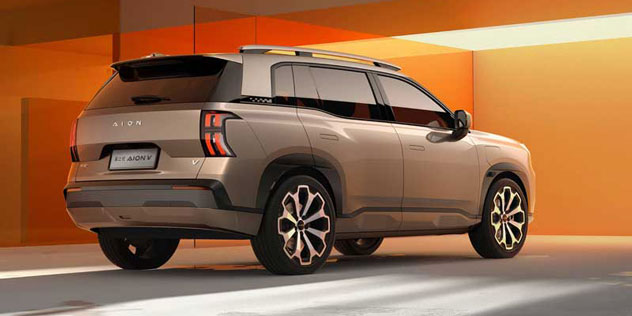
The last though is the second-generation Aion V, which has an aerodynamic profile accentuated by smooth lines, chiselled skirts and arrow-like taillights, while at the front is a distinctive closed grille, characteristic of modern EVs.
Aion’s Chinese website suggests the 4065mm long, 2775mm wide Aion V offers a real-world driving range of around 525km (750km based on the Chinese CLTC rating), a 400-volt architecture that can add 370km range in 15 minutes, a spacious interior one-touch folding seats that can lie flat to make a bed, and an AI-based “self-evolving” cockpit.
Riddara RD6
Geely Auto, along with Zeekr and Lynk & Co (a plug-in hybrid brand not listed here but also coming to Australia) are sister brands to Volvo and Polestar which are already selling EVs in Australia.
Geely Holding’s eponymous marque has started advertising for staff, including a Marketing Director, in Australia, marking its readiness for market. With a plan to launch around mid-2025, it could bring with it the Riddara RD6 electric ute (renamed from Radar after a trademark battle.)

This fully electric pickup truck features a 200kW motor, providing a range of up to 632 km and accelerating from 0 to 100 km/hr in 6.9 seconds. The RD6 supports fast charging, adding 100 km of range in just 10 minutes.
It offers V2L with a huge 6kW output, and has a 1,200-litre bed, 70-litre front storage, and 48-litre rear seat storage. Inside, it has dual 12.3-inch screens, a 9-inch heads-up display, and advanced safety features like six airbags and Bosch electronic stability.
Smart #1 and #3
Smart, co-owned by Geely Holding and Mercedes-Benz, used to sell internal combustion engine (ICE) vehicles in Australia from 2003-2015. It has launched the Smart #1 compact SUV and Smart #3, the #1’s larger sibling.
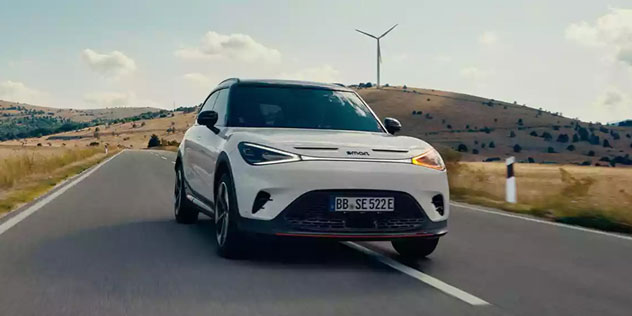
The Smart #1 is a compact electric SUV that combines practicality with advanced technology. Powered by a single electric motor, it produces 200 kW, delivering strong performance and quick acceleration.
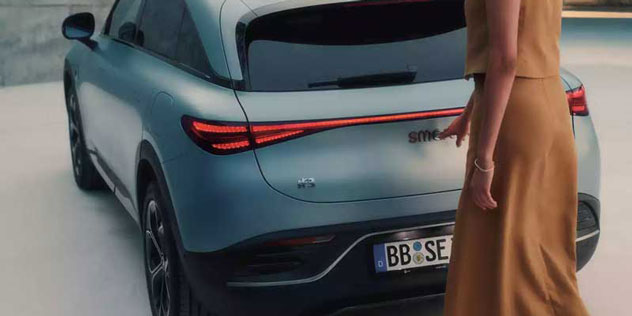
The #3 comes in two configurations: a rear-wheel-drive version with a 200kW motor and an all-wheel-drive Brabus variant with 315 kW.
Both feature a 66 kWh battery, providing a range of up to 440 kilometres (WLTP).
Zeekr X and Zeekr 009
Zeekr on the other hand has all the edge a new brand needs in this day and age and will appeal to a young, hip market. It launched two vehicles in the second half of 2024: the Zeekr X and the Zeekr 009.
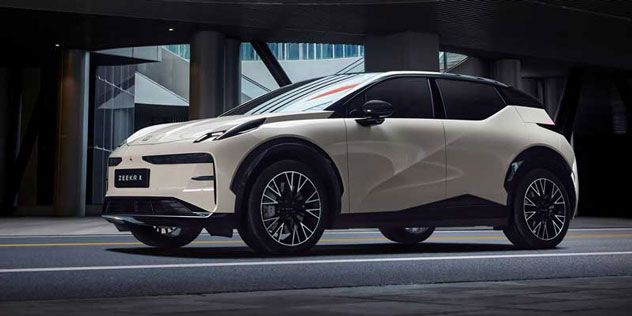
Based on the same platform as the upcoming Volvo EX30, the Zeekr X comes in two variants: a long-range single-motor variant that delivers 200 kW and has a range of around 440 kilometres, and a standard-range dual-motor version with 315 kW, capable of accelerating from 0 to 100 km/h in 3.8 seconds, and offering a range of approximately 446 kilometres based on the WLTP standard.
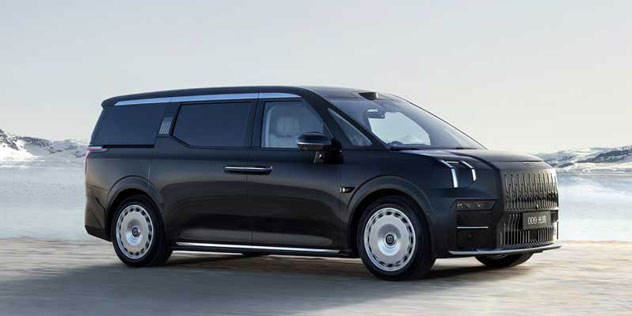
The Zeekr 009 stands out with its impressive specs, including a 400kW powertrain that propels the 009 from 0 to 100 km/h in an astonishing 4.5 seconds. It features an enormous 140kWh battery, providing a range of up to 822 kilometres based on the Chinese CLTC standard (about 575km real-world range.)
Leapmotor C10 and T03
Budget EV brand Leapmotor teamed up with European big name Stellantis in 2023 in a bid to ease expansion headaches outside of China. The latter’s 21 per cent stake (worth €1.5 billion or $AU2.5 billion) will see Leapmotor International (which Stellantis also owns 51 per cent of) enter global markets - including Australia as soon as late 2024.
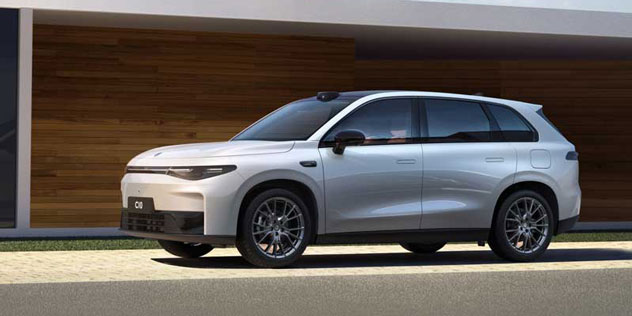
The Leapmotor C10 is a fully electric, family-centric SUV that is the first of Leapmotor’s stable to be built on its global LEAP 3.0 architecture. Global specs include a 170kW/230Nm motor, and around 370km real-world range from a 69.9kWh battery.
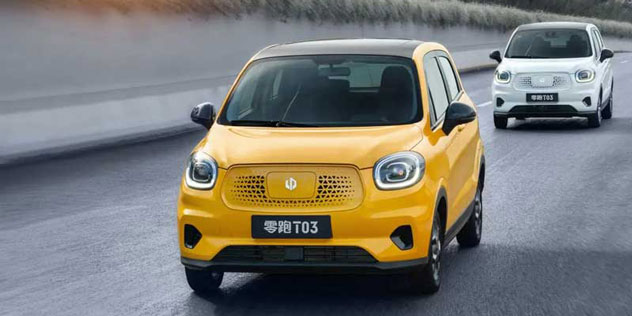
The Leapmotor T03 is a compact electric city car that excels in urban environments. It boasts a real-world range of around 280 kilometres, powered by an 80kW electric motor. Export specs are as yet unconfirmed but in China it is available in four variants with smallish 30-41kWh batteries.
Xpeng G6
Startup Xpeng confirmed it would launch in Australia in the last quarter of 2024 with the Xpeng G6. This is a mid-size electric SUV that debuted in April 2023 and has just been launched in Hong Kong, a fellow right-hand drive market, starting at $HK299,000 (about $AU57,500 at today’s rates.)
It is available in multiple trims, with options for rear-wheel drive (RWD) and all-wheel drive (AWD).
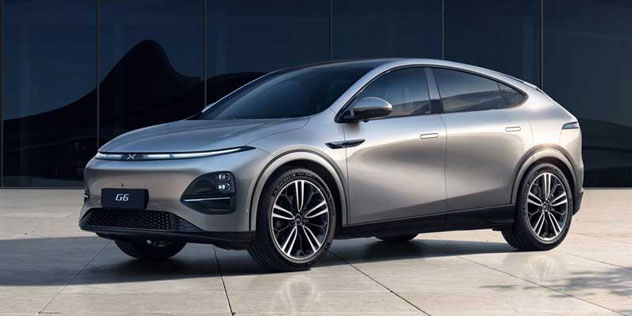
The RWD models feature a single electric motor producing 190kW/440Nm, while the AWD models come with dual motors delivering 350kW/660Nm. The G6 offers a choice between a 66 kWh LFP battery for 435 WLTP range or a nickel-cobalt-based 87.5kWh battery, which delivers a maximum range of up to 550-570km depending on whether it is AWD or RWD.
With an 800-volt architecture, it is capable of charging at up to 280kW, taking it from 10 to 80 per cent in less than 20 minutes.
Aiways U6 and U5
Seven-year-old Chinese startup Aiways has expressed interest in launching in Australia, but not yet indicated when. Having already made its mark left-hand drive Europe, it revealed after the launch of its recent U6 electric fastback that it would definitely consider entering Australia after it enters other right-hand drive markets.
If and when it does, it might bring the Aiways U6 as well as the U5 electric SUV.
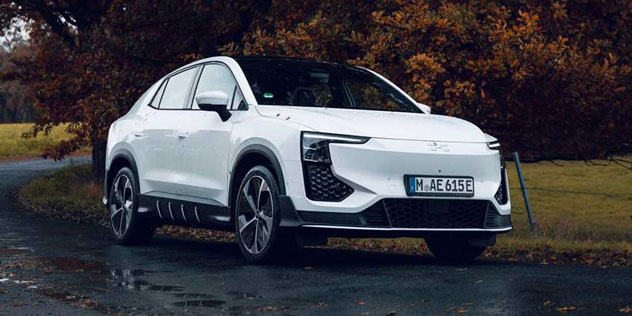
The Aiways U6 is a sleek, modern electric SUV that features a 160kW electric motor delivering 315 Nm of torque, providing a smooth and responsive driving experience. The U6 is equipped with a 63kWh battery, offering a WLTP range of up to 400 kilometres on a single charge.
The Aiways U5 SUV offers similar specs and both promise a spacious interior with a 14.6-inch central touchscreen, advanced driver-assistance systems, and a minimalist design that emphasises comfort and functionality.
Deepal S07, E07 and S05
Changan’s electric sub-brand Deepal has landed in Australia with its first offering – the Deepal S07 SUV. With bold, angular lines and a sleek, coupe-like roofline, the S07 is aimed squarely at the mid-size electric SUV segment. Under the bonnet is a 160kW rear motor and a 79.97kWh battery offering up to 475km of WLTP range. Inside, the cabin features a rotating 15.6-inch infotainment display and premium materials that punch above its price tag. Starting from $53,900 before on-roads, it undercuts rivals like the Tesla Model Y.
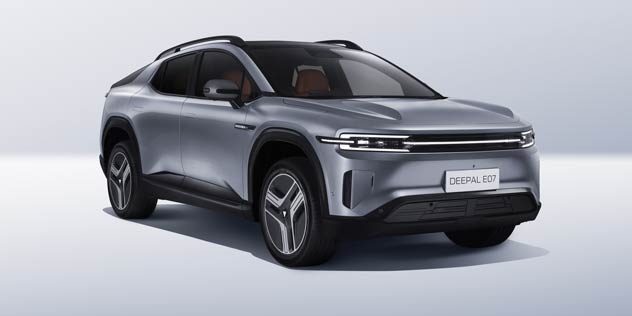
The China-based brand has opened pre-orders for the E07 ute-slash-SUV, due in Q3 2025. It’s available in a single-motor RWD format from $64,900 and delivers 252kW/365Nm and 642km NEDC range (about 450-470km real-world range.) The RWD E07 is joined by a dual-motor variant with 440kW/645Nm and 626km range (NEDC), about 440-460km real world range.
Deepal has also opened the books for those wanting to register the S05, which is expected to be priced below $60,000 and is also due for a Q3 launch. Pricing is not yet available.
Deepal is currently operating in Melbourne, Sydney, Brisbane, Perth, Adelaide and Canberra, with plans to expand if demand requires it.
Geely EX5
After a more than decade-long absence, Geely is back in Australia with the EX5 – a sharply-priced electric SUV built on the brand’s new GEA platform. Starting from $40,990 before on-roads, the EX5 comes in two trims, Complete and Inspire, and is pitched as a value-driven rival to the BYD Atto 3 and MG ZS EV. The front-wheel drive EX5 has been tuned locally to suit Australian roads and includes a three-year service package and Chargefox subscription.

Unlike Geely’s original foray into the Australian market, which was scuppered when plans to introduce the EC7 sedan did not meet Australia’s strict safety standards, the Geely EX5 gets a full five stars. The MK sedan, briefly Australia’s cheapest car at $8999 driveaway and sold via Perth dealership John Hughes Geely, gained a three-star rating.
This re-entry marks a significant play by one of China’s biggest automotive players.
Cadillac Lyriq, Optiq and Vistiq
The American luxury marque owned by General Motors has entered the Australian market for the first time – and it’s doing so with an all-electric lineup.
Leading the charge is the Cadillac Lyriq, a dual-motor SUV with 388kW of power, 610Nm of torque and a WLTP range of 530km from a 102kWh battery. The Lyriq is available in two trims – Luxury and Sport – priced from $117,000 before on-roads. With a 33-inch wraparound LED display, opulent interior appointments and sharp styling, the Lyriq aims to establish Cadillac as a serious contender in Australia’s high-end EV market.

Cadillac has confirmed that its Australian lineup will expand in 2026 with the addition of two more electric SUVs: the Optiq and the Vistiq.
The entry-level Optiq is a five-seat SUV measuring 4820mm in length. It features a dual-motor all-wheel-drive system producing 224kW and 480Nm, powered by an 85kWh battery offering an estimated 480km of range (based on the US EPA rating, which is more comaprable to real world range). The Optiq's interior has been lauded for its serene design and advanced user experience, earning it a spot on Wards' 10 Best Interiors and UX list for 2025.
Serving as the flagship of Cadillac's electric SUV lineup, the Vistiq is a three-row, seven-seat SUV measuring 5222mm in length. It comes standard with a dual-motor all-wheel-drive system and features such as chassis damping control and optional Air Ride Adaptive suspension.
Cadillac also plans to introduce the Lyriq-V, a high-performance variant of the Lyriq, as part of its V-Series lineup. While specific details are yet to be announced, the Lyriq-V is expected to offer enhanced performance and sportier styling.
IM
MG Motor is adding a premium electric sub-brand to its expanding EV portfolio with the launch of IM, presented by MG Motor. The brand – a joint venture between automotive giant SAIC and tech conglomerates including Alibaba – stands for Intelligence in Motion, and brings with it a sharp focus on design, high performance, and cutting-edge tech.
Already launched in China and more recently in Thailand, IM will make its Australian public debut at the 2025 Melbourne Motor Show. Two models will lead the charge: the IM5 sedan (sold in China as the IM L6) and the IM6 SUV (known overseas as the IM LS6). Both are expected to arrive in local MG dealerships later this year, although firm dates are yet to be confirmed.

Backed by MG's growing footprint in the Australian EV landscape – IM aims to lift the bar on luxury EV motoring. According to MG Australia boss Peter Ciao, the new vehicles will offer a “blend of performance, refinement and range”, wrapped in a premium package designed for long-distance comfort.
IM will sit at the top end of MG’s electric line-up, complementing more affordable models like the MG4 and ZS EV, as well as the upcoming Cyberster electric roadster and MGS5 EV. The introduction of IM marks MG’s bid to move upmarket while maintaining its reputation for value and innovation in the EV space.


